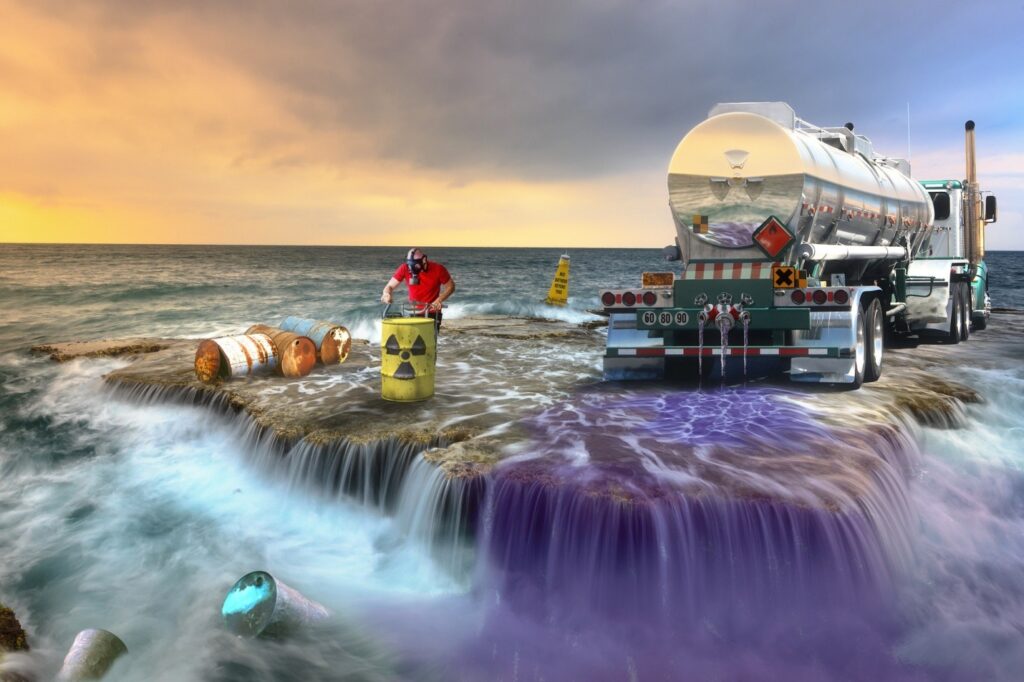Reclaim Waste Fundamentals Explained
Reclaim Waste Fundamentals Explained
Blog Article
The Ultimate Guide To Reclaim Waste
Table of ContentsThe Greatest Guide To Reclaim WasteThe Ultimate Guide To Reclaim WasteEverything about Reclaim WasteTop Guidelines Of Reclaim WasteSome Known Questions About Reclaim Waste.
Domestic sewage waste refers to the waste and items from a residential septic container. The proper administration and disposal of domestic sewer waste call for fluid waste to be transferred to a sewage treatment plant where the correct techniques and equipment are applied to detoxify and dispose of waste.
Commercial waste typically includes prospective threats, such as combustible products or a combination of fluid and solid waste products, and needs a more sophisticated and thorough disposal process. The disposal of business waste normally includes the filtration of waste before transport to make certain risk-free and appropriate disposal. Industrial waste is produced from by-products and overflow of industrial procedures and production.
This type of waste can not make use of the exact same sewer management transportation or procedures as septic or business fluids. The hazardous waste administration procedure calls for the assessment and screening of liquid waste before it undergoes the disposal process (liquid waste removal melbourne). Runoff waste is the fluid waste that originates from drainage and excess stormwater in highly inhabited locations or cities
Drainage waste can create contamination and flooding otherwise taken care of appropriately. Find out more concerning drain cleaning and waste administration. Guaranteeing correct waste administration can prevent disasters and minimize environmental harm. Both people in residential settings and specialists in business or production industries can take advantage of understanding the procedures and policies of fluid waste management.
The 4-Minute Rule for Reclaim Waste
Call PROS Providers today to learn more about our waste monitoring and disposal services and the correct methods to look after the fluid waste you produce.
(https://linktr.ee/leonaube33101)This so-called 'wastewater' is not just a crucial resource however, after therapy, will be launched to our land, waterways or the ocean. Utilized water from bathrooms, showers, bathrooms, kitchen sinks, washings and commercial processes is understood as wastewater.

water made use of to cool down equipment or tidy plant and equipment). Stormwater, a type of wastewater, is drainage that moves from farming and city locations such as roof coverings, parks, yards, roadways, courses and seamless gutters into stormwater drains, after rainfall. Stormwater moves unattended directly to local creeks or rivers, eventually getting to the ocean.
The Reclaim Waste Statements
In Queensland, most wastewater is treated at sewage therapy plants. Wastewater is transferred from domestic or industrial sites via a system of sewage systems and pump stations, referred to as sewerage reticulation, to a sewage treatment plant. go now City governments construct, preserve and run most sewage therapy plants. Operators are certified under the Environmental Management Act 1994 to release treated wastewater at an appropriate ecological requirement right into rivers.
The Division of Natural Resources advises city governments concerning handling, operating and preserving sewerage systems and treatment plants. In unsewered locations, city governments might need householders to mount specific or home sewer therapy systems to treat residential wastewater from toilets, kitchens, restrooms and laundries. The Division of Natural Resources authorises making use of house systems when they are verified to be effective.
In some new subdivisions, therapy of some stormwater to get rid of litter, sand and crushed rock has begun utilizing gross contaminant catches. Wastewater therapy occurs in 4 phases: Gets rid of strong matter.
Makes use of little living organisms knows as micro-organisms to damage down and eliminate remaining liquified wastes and fine bits. Micro-organisms and wastes are incorporated in the sludge.
What Does Reclaim Waste Do?
Nutrient removal is not available in any way sewage therapy plants because it calls for pricey specialist tools. It is ending up being much more usual in Queensland. Clear fluid effluent produced after treatment may still contain disease-causing micro-organisms. If this effluent is released into waterways such as rivers or the sea, the micro-organisms will eventually die out.

This generally suggests wastewater needs to be treated or pollutants eliminated before it can be discharged to waterways. Most wastewater streams right into the sewage system. Under the Act, local federal governments carry out authorizations and licences for ecologically appropriate tasks (ERAs) involving wastewater releases that may have a local effect. The department provides approvals and licences to ERAs including wastewater launches that might have a local or statewide impact.
Some Known Facts About Reclaim Waste.
Tracking offers accurate details concerning water top quality and can confirm that permit conditions are being satisfied. The info acquired through monitoring offers the basis for making water high quality decisions.
Report this page